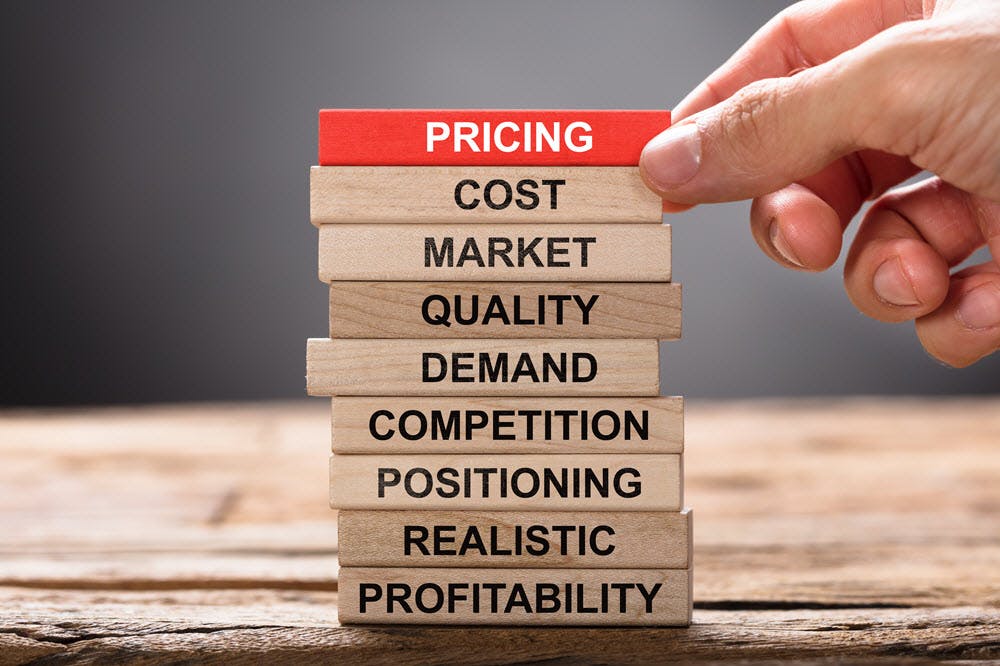Do you know if your product is priced right for its category? Do you know exactly how much you’re making on each unit you sell? And if so, have you considered all the hidden or additional fees associated with doing business in retail?
If you answered ‘NO’ to any of these questions, you’re not alone. In fact, you’re like most of the founder-led brands I work with. But because it’s such an essential piece of sales success, it’s always the place I start when supporting a new client. Margins erode quickly in consumer packaged goods (CPG), and all too often, I see emerging brands losing money on each product they sell. Yet, they operate as if they’re making money just because they’re getting new placements. Following are some key steps to ensure you are pricing your products correctly.

Step 1: Category market evaluation
The first thing you need to do is a category market evaluation, which includes a competitive pricing survey. This step ensures you have a firm handle on what the right price is – for your category, and your specific product, while taking your positioning within the category into account. Using that target Suggested Retail Price (SRP) as a baseline, you can work backwards to determine the exact amount you’re making on each item you sell and what the margin contribution is to your bottom line, as well as ensure you’re leaving enough room for retailer margins.
Understanding your category and the competing brands and products on shelf does more than provide a benchmark for pricing norms; it allows you to show up as a valued partner for retail buyers. When you speak to category norms, category leaders, breakout trends, and slow performers within your category, you show the buyer that you care about more than just getting placement on a shelf. When you take that a step further and clearly articulate your brand’s positioning within a category and the opportunity the retailer has by bringing in your product, you’ve set yourself apart from the competition. Now you’re speaking the buyer’s language and addressing their main concern: category performance!
There are some key questions you want to ask yourself as you complete your category market evaluation, including:
- What problem is your product solving? There are many “me-too” brands on the market; set yourself apart by having a strong positioning statement. Be sure you’re differentiating your positioning, messaging, pricing, ingredients, marketing, sourcing, etc. This will feed into how you talk to buyers and consumers.
- Who is your ideal customer? Create a client avatar, not just a demographic. Include age, occupation, income, relationship status, education level, hobbies, and interests. Give your avatar a name and gear your positioning statements directly to them. Take this one step further and identify how your ideal client would describe the problem they are experiencing and the ways in which your product helps solve it.
- How is your category trending? Is it experiencing a lot of innovation or is it relatively stagnant? You can Google data points if you don’t have direct access to data. RangeMe, SPINS, Nielsen, The Hartman Group, and New Hope are all great resources for category information.
- Who are your top five competitors? Make sure to include the category leader(s) and new brands who seem to be doing well. If you don’t know who these are, conduct a market tour and visit as many local or regional stores as possible. Talk to buyers and store employees about what they’re noticing in your category, their favorite brands, and what brands sell the best/worst.
- How are you different from these competitors? How are you the same? Include key benefits and attributes, certifications, packaging, claims, ingredient standards, or manufacturing processes.

Step 2: Complete a pricing survey
Once you have all this information, you can complete the pricing survey. Use the five competing brands from your market evaluation and log their pricing across multiple channels, including Amazon, another e-commerce platform (like Vitacost), a prominent national retailer (like Whole Foods or Target), and an independent local or regional retailer (like a co-op or smaller chain). Make sure to include your own product in this pricing survey and take into account unit or size variances so you can get an equal comparison. Then use this information to determine the target SRP for your product.
Step 3: Cost of goods and margin analysis
From there, complete your COGs (Cost of Goods) and Margin analysis. These are the metrics you’ll want to include:
- Base COGs (ingredient, inner packaging, and manufacturing costs)
- Distributor pricing vs direct (your distributor pricing is typically around 15% less than your direct)
- Outer packaging costs
- Shipping
- Tradespend (typically around 15% for mature brands or products; new products will see a higher tradespend in their first year; closer to 25% of wholesale sales)
- Broker fees (these differ by category; food and beverage tend to be a few points lower than supplements or body care. A good baseline number is 7%).
Step 4: Final analysis
Once you have all these numbers confirmed you can bump those up against your target SRP and see exactly how much you’re allocating for retailer margins and determine how much you’re contributing to your bottom line on each item you sell.
Doing this competitive evaluation and pricing analysis is key to your success, even if you’ve been selling for a while. Take the time to figure this out and get it right and then use that information to increase your profitability and impact. If it feels confusing or you want to use our competitive market evaluation template, reach out to support@katelabrosse.com and we’ll send it to you for free.
Watch the recording of our “Building Powerful and Profitable Promotions Workshop” with Kate LaBrosse here.

